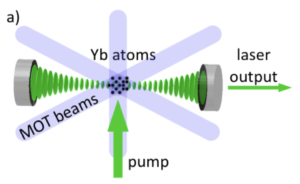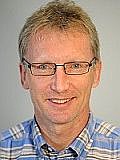B04 – Opto-mechanical lasing mechanisms in cold atoms
Summary
We will study the mechanical dynamics of cold ytterbium atoms inside a high-finesse optical resonator and the concomitant steady-state and transient characteristics of the light emission from the resonator. The project will bring together the physics of cold-atom lasing with the physics of collective opto-mechanical atom-mode interaction. We will investigate spatial self-organization of the atoms and ways to control it, with respect to the conditions under which continuous lasing may be realized. As a more long-term perspective, we aim at demonstrating laser action in combination with self-ordering and/or cooling of the atoms, a collective process with several intrinsic non-linearities and feedback loops, expected to display a rich spectrum of phenomena.
Project Leaders
Jürgen Eschner
Universität des Saarlandes
66123 Saarbrücken
- Phone number: +4968130258016
- Email: juergen.eschner@physik.uni-saarland.de
Publications
No publications found.


